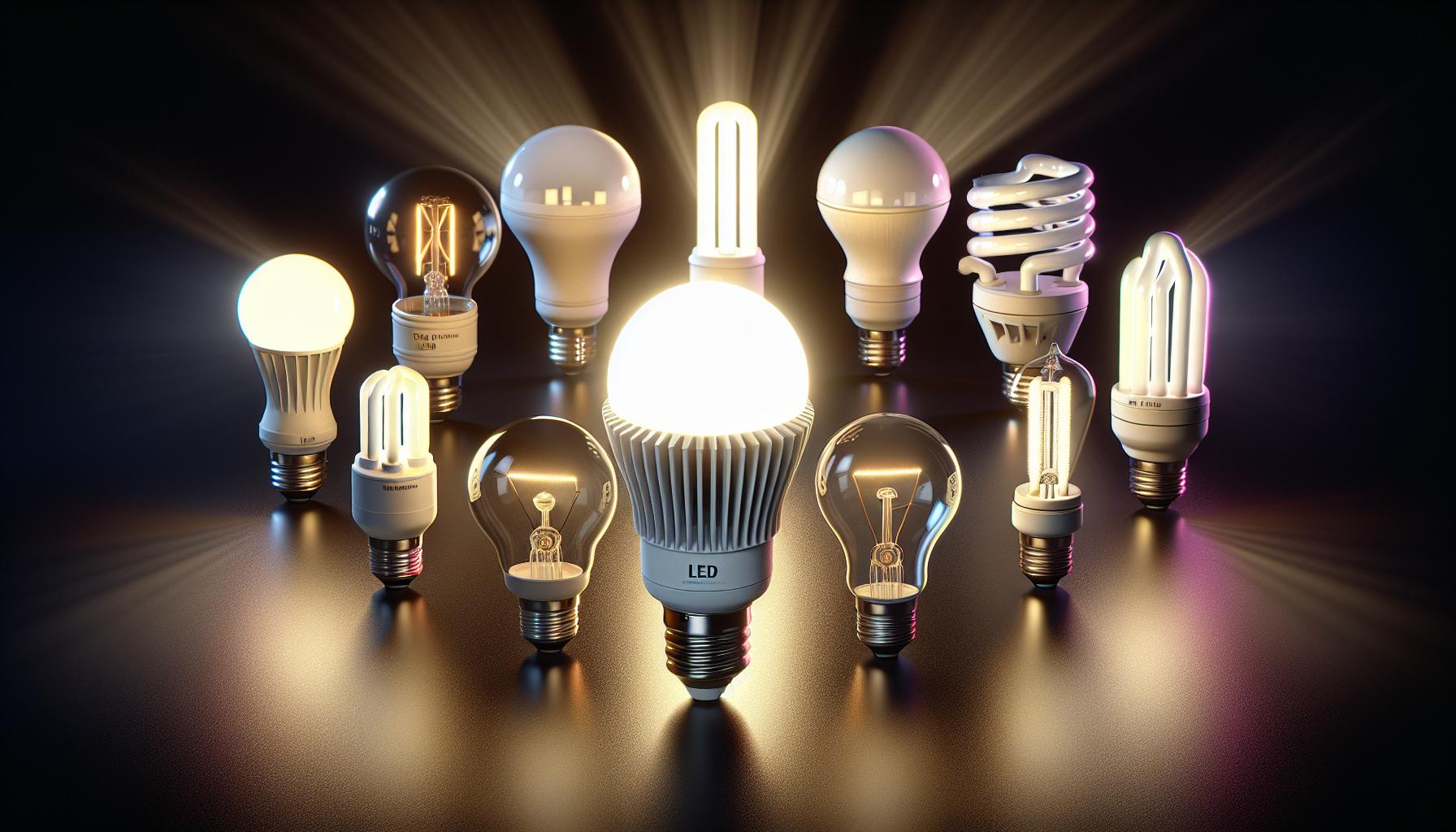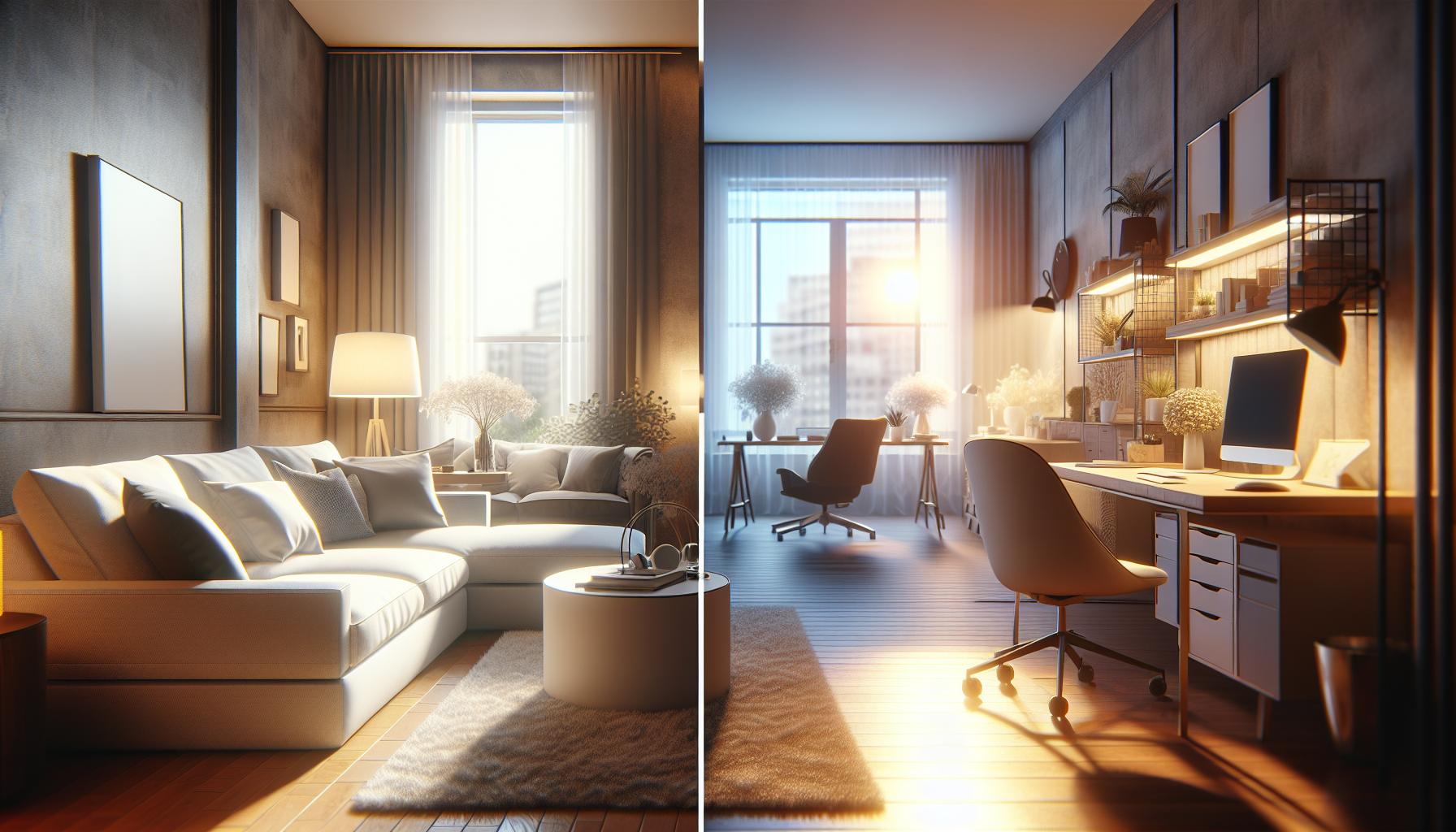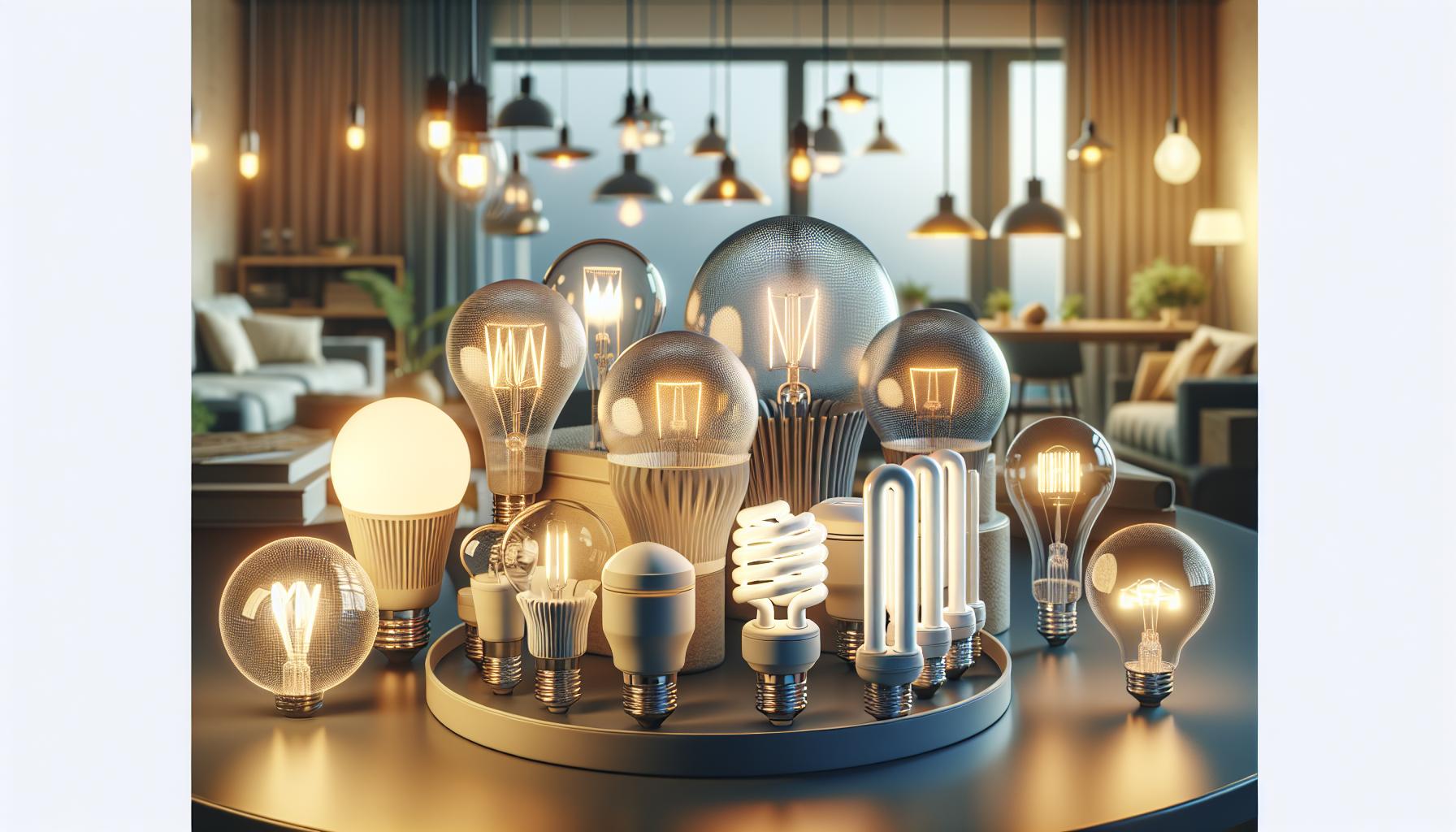Ever found yourself in the light bulb aisle, wondering if it really makes a difference which one you pick? It’s not just about the wattage or the base size; there’s a whole spectrum of options out there. From incandescents to LEDs, each bulb has its own story, and choosing the right one can be a bright idea for both your home and your wallet.
Think about the last time you flipped a switch. Did you consider how that light bulb affects your energy bill, or the mood of the room? It’s not just about illumination; it’s about the subtle influence light has on your daily life. Let’s shed some light on the matter and find out if the type of bulb you choose really matters.
The Importance of Light Bulb Selection
When you’re standing in the lighting aisle, the variety of bulbs can feel overwhelming. But trust me, taking the time to select the right one is more than just a practical choice; it’s an investment in your daily comfort and environmental footprint. Light bulb selection is critical, not only because of the different types available but also due to the varying atmospheres they can create in a room.
Think about the ambiance you want to achieve. Do you crave a cozy, warm glow similar to a sunset, or are you aiming for a bright, crisp light reminiscent of daylight? With today’s technology, you can personalize your lighting more than ever before. LEDs, for instance, offer a wide spectrum of colors and dimming capabilities that can adjust with your mood or activity.
Energy efficiency should be at the forefront of your selection process. It’s staggering to realize that traditional incandescent bulbs convert only about 10% of their energy into light, while the rest becomes heat. In stark contrast, LED bulbs boast an energy-to-light conversion rate of roughly 60%. This shift not only impacts your utility bills but also your carbon footprint. Let’s lay out some numbers:
| Bulb Type | Energy Efficiency |
|---|---|
| Incandescent | 10% |
| LED | 60% |
On top of efficiency, consider the bulb’s lifespan. LEDs outshine others with an impressive 20,000 to 50,000 hours of use, reducing the frequency of replacements. Halogen incandescents and CFLs fall somewhere in the middle, while traditional incandescents have the shortest life expectancy.
As a DIY enthusiast and a lover of all things lighting, it’s clear to me that bulb choice impacts more than just your immediate environment. It affects your energy consumption and wallet in the long term. Each time you select a bulb, you’re also making a decision about your home’s mechanical functionality. Who knew that something as simple as a bulb could pose such an essential role in your daily life and the health of our planet?
Understanding the Different Types of Light Bulbs
As you forge ahead with your next DIY home project, it’s crucial to be well-informed about the variety of light bulbs that can set the perfect ambiance for each space in your home. The market is rich with options, each with unique features that cater to different lighting needs.
Incandescent bulbs have been lighting up our lives for over a century with their warm glow. However, they’re not exactly the paragon of energy efficiency. On the other hand, halogen bulbs, a type of incandescent lighting, offer a crisp, white light and are slightly more energy-efficient, although they heat up rather quickly.
Fluorescent bulbs are the long tubes often seen in commercial spaces. They’ve got a knack for filling large areas with light and excel in lifespan compared to incandescent bulbs. Compact Fluorescent Lamps (CFLs), their smaller spiral-shaped relatives, brought the fluorescent technology into homes. But let’s not forget, handling CFLs requires a gentle touch due to their mercury content.
Onto the champion of efficiency — LED bulbs. They’re the wunderkinds of the lighting world, boasting incredibly long life spans and unmatched energy savings. The initial cost might raise an eyebrow, but they’ll save you more green in the long run, both monetarily and environmentally.
Don’t miss out on smart bulbs either! They’re the ones you can control with your smartphone, set schedules for, and even change colors to match your mood. They’re like the Swiss Army knife of lighting, combining LED efficiency with cutting-edge technology.
Here’s a quick overview of the lifespan and energy efficiency of these bulbs:
| Type of Bulb | Average Lifespan | Energy Efficiency |
|---|---|---|
| Incandescent | 1,000 hours | Low |
| Halogen | 1,000 – 3,000 hours | Moderate |
| Fluorescent | 7,000 – 15,000 hours | High |
| CFL | 8,000 – 10,000 hours | Higher |
| LED | 20,000 – 50,000 hours | Highest |
Energy Efficiency: Which Bulb Saves You Money?
« Is There a Problem with LED Light Bulbs? Uncovering the Truth
What Are Light Bulbs Good For? Uncover Their Surprising Uses & Benefits »
When you’re knee-deep in home DIY projects, lighting often plays a key role, and choosing the right light bulb can lead to hefty savings over time. You may be asking yourself, “Do the more expensive bulbs really save me money?” Let’s break it down.
LED bulbs are at the front of the pack when it comes to energy efficiency. They use about 75% less energy than traditional incandescent bulbs and last up to 25 times longer. Imagine only having to replace your bulbs once in a decade or two!
On the other hand, CFLs come in as a close second. They’ll shave off about 70% of your energy usage compared to incandescents. However, CFLs don’t usually last as long as LEDs. Their lifespan is about 10 times that of incandescents, which is still impressive but may have you climbing the ladder more than you’d like.
Here’s a quick rundown of the average energy consumption and cost savings for each bulb type based on a usage of 2 hours per day at an electricity rate of 13 cents per kWh:
| Bulb Type | Energy Usage (Watts) | Annual Energy Cost |
|---|---|---|
| Incandescent | 60 | $4.73 |
| Halogen | 43 | $3.37 |
| CFL | 15 | $1.18 |
| LED | 10 | $0.78 |
In comparison to the initial cost, the sticker price of an LED bulb is higher than that of an incandescent. However, don’t let that up-front cost deter you. The savings over an LED’s lifespan can dwarf the initial investment, especially when you factor in the cost of replacements for shorter-lived bulbs.
Smart bulbs might seem like a splurge, but for tech-savvy DIY enthusiasts, they offer an added layer of energy saving. They can be programmed to turn off when no one’s in the room or adjust their brightness based on the time of day, optimizing your home energy use.
Impact of Light Bulbs on Mood and Ambiance
Lighting isn’t just about visibility. The hue and brightness of your bulbs shape the vibe of your space, affecting mood and ambiance. As an expert in making homes cozy and stylish, you know the secret lies in choosing the right kind of light.
Color temperature is key. Measured in Kelvins, it ranges from warm to cool. Warm light—around 2700K—is akin to the glow of a sunset, ideal for bedrooms or living areas where you want to relax. Cool light, upwards of 5000K, mirrors daylight and is best for task lighting in places like the kitchen or home office.
Think about how restaurants use dim, warm lighting to create intimacy, while offices go for bright, cool light to boost productivity. You mimic these settings in your home to enhance how you feel in each room.
(LEDs and CFLs reign supreme in color variety, offering a spectrum of temperatures to choose from.)
- Choose warm light for:
- Choose cool light for:
Aside from color, brightness also plays a part. Measured in lumens, the right brightness level ensures comfort without eye strain. For a cozier atmosphere, lower lumens work well. If you need to spot the smallest detail, though, crank up those lumens.
Smart bulbs push the envelope further. They adapt to your moods, syncing with your daily rhythms or responding to the tap on a smartphone. Imagine your lighting transforming from a gentle morning rise to an energetic midday, then winding down as evening falls—all at your command. These bulbs truly offer customization at your fingertips.
Quality lighting design means more than just picking out bulbs. It’s about creating layers of light using multiple sources and intensities. Combining general, task, and accent lighting can underscore your home’s features and complement your DIY décor elements.
Remember, every bulb plays a role in setting the stage for life’s moments. Whether you’re curling up with a good book or hosting a lively gathering, the light you choose helps craft the perfect scene.
Factors to Consider When Choosing a Light Bulb
You might not think twice about the light bulbs you pop into your fixtures, but as an enthusiast of home DIY projects and a connoisseur of lighting, I’ll let you in on a secret: the right bulb can make or break a room’s design and functionality. Let’s shed some light on this subject.
Energy Efficiency
When you’re browsing the lighting aisle, the first thing to scout for is energy efficiency. LED bulbs are your best bet for cutting down on energy use and keeping your electricity bills low. They last longer than traditional incandescent bulbs and use a fraction of the power. Seen those spiraled CFLs? They’re also in the energy-saving game, though not as long-lasting or efficient as LEDs.
Dimming Capabilities
If you love setting the mood, dimmable bulbs will be your new best friends. However, make sure your light fixture is compatible. Not all LEDs and CFLs can dim, and you’ll need a special dimmer switch to match. Investing in smart bulbs? These often-dim like a dream and can be controlled with your phone or smart home system.
Color Rendering Index (CRI)
CRI is a way of measuring how true to life the colors look under the bulb’s light. For areas like your closet, craft area, or bathroom, where distinguishing between colors is paramount, aim for a high CRI number – the closer to 100, the better.
Bulb Shape and Base
Bulbs come in a dazzling array of shapes and base types. Pinpoint what you need before you shop. Are you in need of a globe bulb for your vanity or a floodlight for outdoor security? The wrong shape can throw off the appearance or function of your light fixture.
Armed with this knowledge, you’ll be ready to tackle any lighting project—whether it’s adding ambiance to your living room or illuminating your latest creation. With the right bulbs, you’ll not only enhance the comfort and appeal of your home but also revel in the satisfaction of a DIY job done right. Lights aren’t just about seeing; they’re about experiencing each moment at home to its fullest.
Conclusion
So you’ve seen just how much your choice of light bulb can influence your space. From slashing energy bills with LEDs to perfecting ambiance with dimmable options, it’s clear that the details do matter. Remember to pick a bulb with a high CRI for spaces where true color is key and ensure you’ve got the right shape and base for your fixture. With these tips in hand, you’re all set to brighten up your home in the smartest way possible. Go ahead and light up your world with confidence!
Frequently Asked Questions
What factors should I consider when choosing a light bulb?
When selecting a light bulb, consider its brightness (measured in lumens), energy efficiency, compatibility with fixtures, whether it’s dimmable, Color Rendering Index (CRI) for color accuracy, and the correct bulb shape and base for your fixture.
Are LED bulbs more energy-efficient than other types?
Yes, LED bulbs are more energy-efficient compared to traditional incandescent bulbs and even CFLs, helping cut down on energy use and electricity costs.
Do I need a special switch for dimmable bulbs?
Dimmable bulbs do require compatible dimmer switches to adjust their brightness levels. Always check that your dimmer and bulb are compatible before purchasing.
What is the Color Rendering Index (CRI) and why is it important?
The Color Rendering Index (CRI) measures the accuracy of how true the colors appear under a light source. High CRI bulbs are important in areas where color accuracy is crucial, such as in kitchens or art studios.
How do I choose the right bulb shape and base?
Choose a bulb shape that fits the desired appearance and function of your light fixture. The base must match the socket of your fixture. Refer to the fixture’s manufacturer specifications or take your old bulb to the store for comparison.





